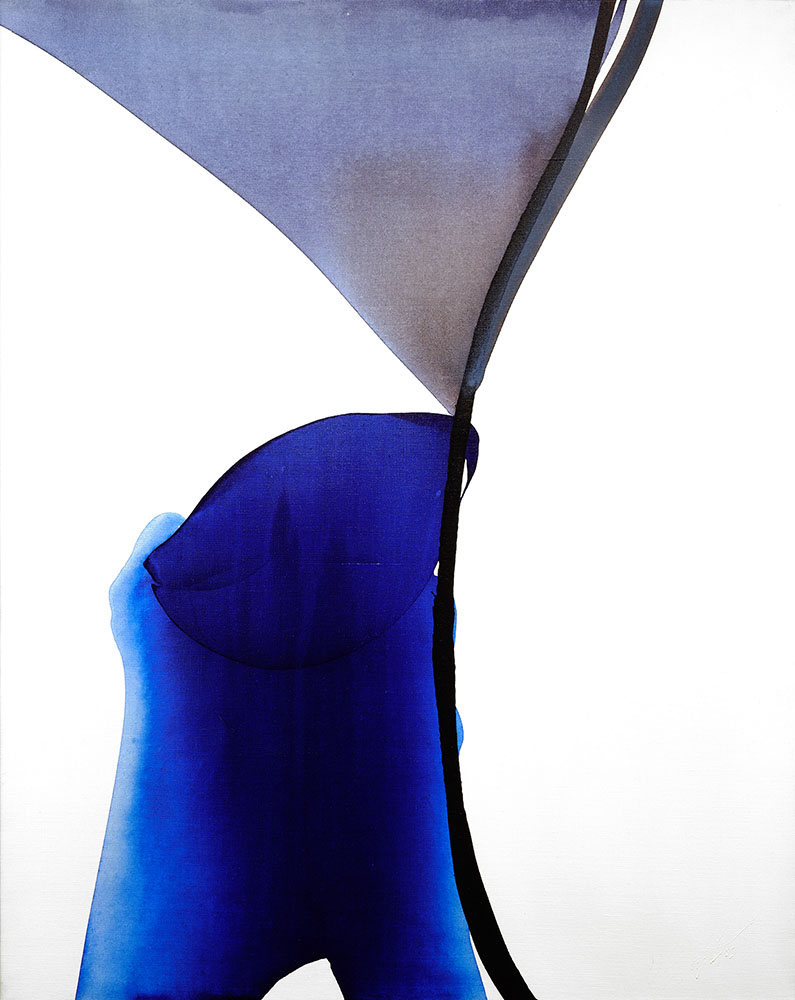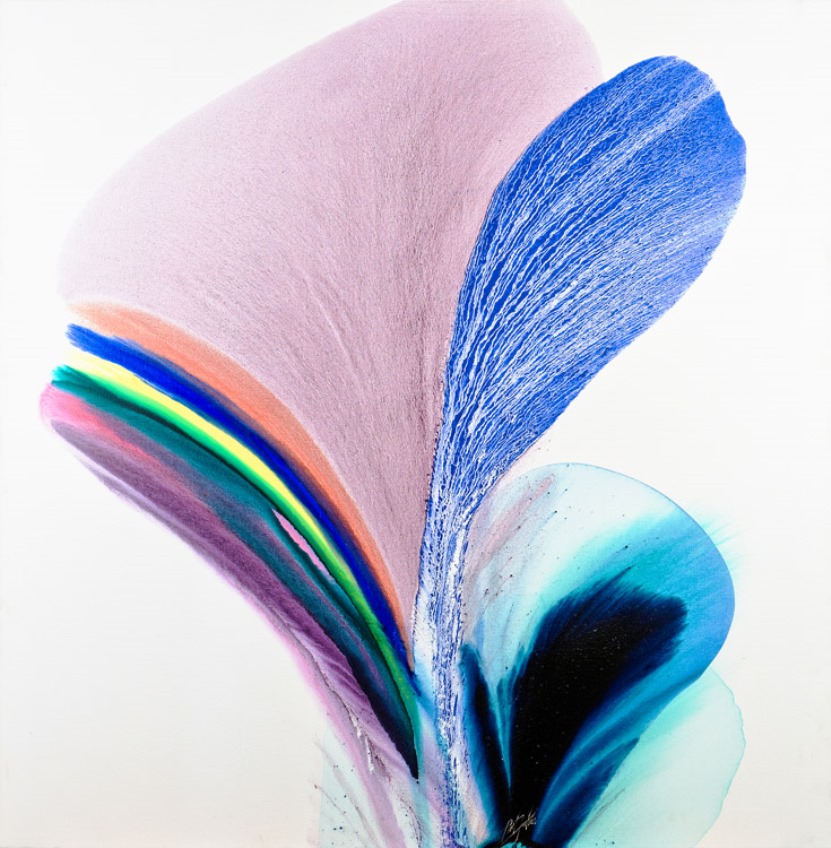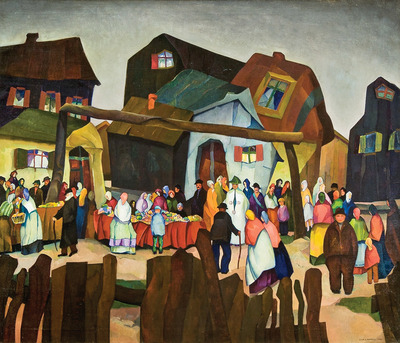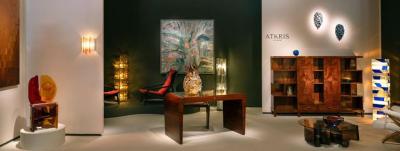D. Wigmore Fine Art Spotlights Abstract Expressionist Paul Jenkins, A Master of Color and Flow
D. Wigmore Fine Art currently has twelve paintings by Paul Jenkins on view in the exhibition Paul Jenkins: Color and Flow. Jenkins, who rose to prominence in the 1950s, created elegant, ethereal works using unorthodox techniques that relied on his absolute control of the paint. Although he was part of both the Abstract Expressionist movement in New York and the L’Art Informel movement in Paris, Jenkins’ use of color and flow distinguished him from his peers, including giants of Abstract Expressionism, Jackson Pollock and Mark Rothko.
In the 1950s, on a quest to find fluidity while working in oil and enamel, Jenkins began to cut his paints with turpentine. By pouring the doctored paint directly onto the canvas, Jenkins was able to create thin glazes of color that contrasted with dense shapes, giving the paintings form. According to Deedee Wigmore, President of D. Wigmore Fine Art, “This created dynamic movement and depth in Jenkins’ paintings which was distinct among his peers.” During this period, Jenkins also relied on black and white to break through the billowy forms, create precise lines and control the viewer’s gaze. Paris (1957) exemplifies this practice as the undulating waves of color are sliced by a wedge of black and calligraphic white lines that lead the viewer into, up and across the painting.
In 1960, Jenkins transitioned to acrylic paint. Wigmore says, “With the development of water-based acrylic paint, Jenkins opened his compositions to singular shapes on a white gessoed background. The fact that Jenkins prepared his canvas so the paint sat on the canvas surface [and didn’t soak into the weave] is a central distinction of his work compared to the Color Field artists that stained paint into their canvases. Jenkins achieved far greater movement in his acrylic compositions because the paint could be manipulated. Jenkins incorporated gravity and the action of pouring as well as moving the paint with brushes and his unique ivory knives which guided the paint. The ivory knife was a tool that helped Jenkins achieve the defined edges of his forms while not abrading the canvas.” This technique allowed Jenkins to experiment more fully with opacity and translucency. Among the works from this period on view in Color and Flow is Phenomena Blue Ligeance (1963), which features a deep blue form set against a crisp white background, stretching upward as it transitions to a widening veil of softer blue-black paint — a study in the fine balance between strength and delicacy.
In the 1970s, Jenkins continued to refine his technique and master his medium, as evidenced by Phenomena Maimonides Mantle (1979). The tension between density and transparency remains apparent as tightly layered plumes of diaphanous color spread upward. Jenkins also continued his exploration of texture, this time using granular veils to add a new dimension to his work. “Our exhibition gives viewers the opportunity to see how Paul Jenkins builds from one work to the next, increasing complexity,” says Wigmore. “His paintings do not have the seriality we see today. Each work is a unique phenomenon distinct in its shapes, colors and expression.”
Arranged chronologically, Color and Flow allows viewers to see both the developments and continuations of Jenkins’ style. Wigmore says, “Paul Jenkins combined action and skill in his process which resulted in quality work that has become timeless. Contemporary artists visit the exhibition and are astounded at Jenkins’ absolute control of the paint. The devotion Paul Jenkins had to his craft is obvious and resonates with viewers today.”
For more information about Paul Jenkins: Color and Flow at D. Wigmore Fine Art, click HERE.


































